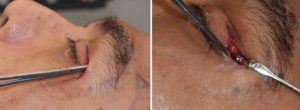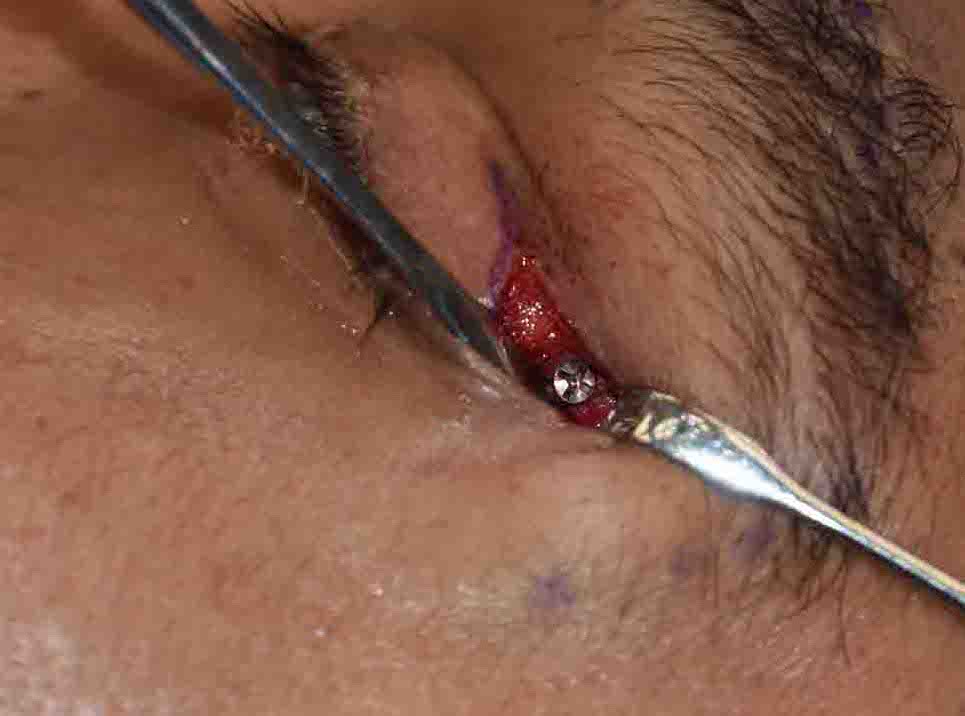Augmentation of the brow ridges can be done by a variety of techniques. Injectable fillers is the non-surgical approach and, while it can be effective, their effects will be temporary. Fat injections offer a minimally invasive surgical method but how well the fat survives and whether it will be smooth is unpredictable. While both injectable methods provide volume their soft consistency will not usually create a more natural and effective result that comes from augmenting the bone….which is what gives the brow ridges their shape.
Bone-based augmentation of the brow ridges can be done by a variety of materials. The most effective material is one that is designed to fit the patient and give the desired shape that is smooth and symmetric. Thus a custom brow bone implant approach is most ideal as it is made based on the patient’s 3D CT scan and provides a push that is more similar to bone.
In placing a custom brow bone implant a triangular three-incisional technique is used, one superior and two inferior ones. The endoscope is used superiorly to complete a subperiosteal dissection/release across the superior orbital rims out onto the lateral orbital rims. But such dissection laterally can not be completely assured even with the endoscope. And given that inadequate inferior positioning would be the most common placement concern, additional incisional access is needed.

Custom brow bone implants can be inserted through small discrete scalp and eyelid incisions. This triangulation approach allows indirect (endoscopic) and direct visualization of all aspects of the implant’s placement.
Dr. Barry Eppley
Indianapolis, Indiana



